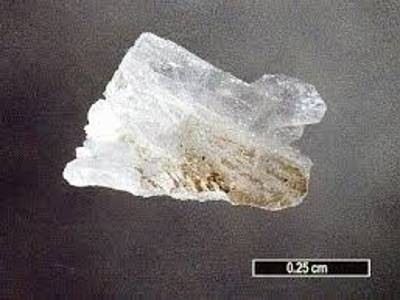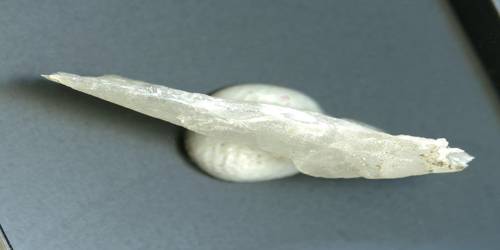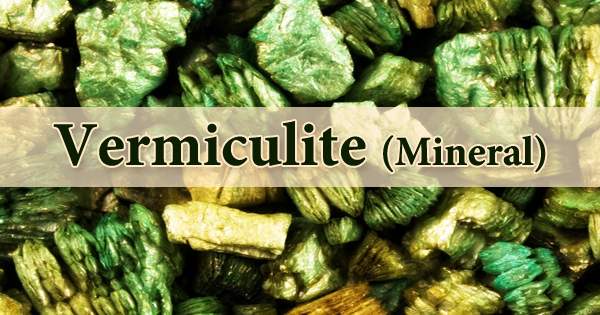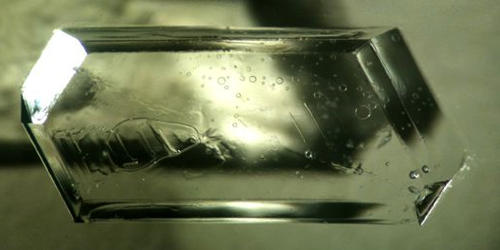Calciborite, CaB2O4, is a rare calcium borate mineral. It was named after the chemical components in its composition – Calcium, and Boron. It was first described in 1955 in the Novofrolovskoye copper–boron deposit, near Krasnoturinsk, Turinsk district, Northern Ural Mountains, Russia.
General Information
- Category: Inoborates
- Formula: CaB2O4
- Crystal system: Orthorhombic
- Crystal class: Dipyramidal (mmm).

Properties
Calciborite can be identified in the field by its white color and a white streak. This mineral has no cleavage, and a conchoidal, uneven fracture. The density of calciborite is 2.878 g/cm3 with a hardness of 3.5 – approximate to a copper penny.
- Formula mass: 125.70 g/mol
- Color: White
- Crystal habit: Prismatic crystals and radial clusters
- Cleavage: None
- Fracture: Conchoidal to uneven
- Mohs scale hardness: 3.5
- Luster: Vitreous
- Streak: White
- Diaphaneity: Translucent
- Specific gravity: 2.878
Occurrence
Calciborite occurs from drillcore into a contact metasomatised limestone near a quartz diorite intrusion associated with a copper deposit in skarn. It is often associated with minerals such as sibirskite, calcite, dolomite, pyroxene, garnet, and magnetite.
It occurs in a skarn deposit formed in limestone adjacent to a quartz diorite intrusive. It occurs associated with: sibirskite (another rare calcium borate mineral), calcite, dolomite, garnet, magnetite, and pyroxene. It has also been reported from the Fuka mine of Okayama Prefecture, Japan.
Information Source;
















